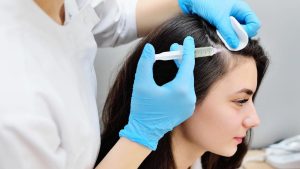Effective Mass Tort Marketing Strategies to Enhance Client Engagement and Results
Understanding Mass Tort Marketing
Mass tort marketing is an essential aspect of the legal landscape that involves promoting legal services related to mass tort claims. As more consumers gain access to legal support regarding issues like defective products, environmental disasters, or corporate malfeasance, the need for effective marketing strategies has grown significantly. The complexity and dynamic nature of mass torts require tailored marketing approaches that resonate with specific audiences and meet their unique needs. For comprehensive strategies and insights, you can explore Mass Tort Marketing to understand how legal professionals can navigate this multifaceted domain.
Definition and Importance of Mass Tort Marketing
Mass tort marketing refers to the promotional strategies employed by law firms to attract potential clients involved in mass tort litigation. Unlike class actions, where one lawsuit represents a group collectively, mass torts are separate lawsuits filed by individuals with similar claims against a common defendant. This distinction makes mass tort marketing particularly important, as target audiences require specific messaging tailored to their individual circumstances.
The importance of mass tort marketing lies in its ability to link clients grappling with injuries stemming from widespread issues with the legal resources they need for redress. With the growth of the internet and various digital marketing channels, law firms can engage potential clients more efficiently, making it crucial to develop effective marketing strategies that deliver results.
The Role of Legal Marketing in Mass Torts
Legal marketing in mass torts plays a pivotal role in educating potential clients about their rights and the legal process. It encompasses a range of activities, including search engine optimization (SEO), content marketing, social media engagement, and paid advertising.
By utilizing these techniques, law firms can establish their expertise and authority in specific areas of mass tort litigation, while simultaneously building trust with affected individuals. Effective legal marketing not only informs but empowers potential clients to take action, which is essential in driving successful outcomes for both clients and firms alike.
Common Myths About Mass Tort Marketing
Despite its significance, several misconceptions surround mass tort marketing:
- Mass tort marketing is just like personal injury marketing: While both share similar fundamental objectives, mass tort marketing requires a more nuanced approach to address the collective nature of claims.
- All potential clients can be treated the same: Each potential claimant has unique needs, and mass tort marketing should reflect these differences to be effective.
- Only large firms can succeed in mass tort marketing: Smaller firms can compete effectively by employing targeted strategies that resonate with specific audience segments.
Key Components of Successful Campaigns
Targeting the Right Audience for Mass Torts
Identifying and targeting the right audience is fundamental to the success of any mass tort marketing campaign. Understanding the demographics, needs, and legal circumstances of potential clients allows law firms to build more effective campaigns. This often involves conducting market research to gather insights into the experiences of individuals affected by specific issues, such as defective medical devices or harmful pharmaceuticals.
Utilizing data analytics tools can help identify key audience segments, such as age, geographic location, and susceptibility to products in question. By pinpointing these segments, firms can tailor their messaging and choose the most appropriate channels for outreach.
Crafting Compelling Messages
Creating compelling messages is vital to capturing the attention of potential clients. Marketing content should be empathetic, informative, and empowering, reassuring individuals that they have legal recourse and encouraging them to take action.
Successful messaging in mass tort marketing should highlight:
- Testimonials from previous clients to build trust.
- Data that illustrates the prevalence of issues related to the tort.
- Clear next steps that outline how individuals can seek assistance.
Utilizing persuasive language while remaining honest about the outcomes is essential to maintaining credibility.
Leveraging Digital Channels for Mass Tort Marketing
The digital landscape offers numerous channels for mass tort marketing, including:
- Search Engine Optimization (SEO): Optimizing content for search engines ensures that potential clients can find your firm when searching for legal help related to mass torts.
- Social Media: Engaging audiences on social platforms, sharing information, and facilitating discussions can attract potential clients.
- Email Marketing: Targeted email campaigns can nurture leads and inform them about ongoing mass torts and legal options.
- Pay-Per-Click (PPC) Advertising: Strategic ad placements can direct traffic to your website, attracting individuals searching for specific legal services.
By leveraging these digital channels effectively, law firms can increase their visibility and directly connect with those in need of legal assistance.
Best Practices for Legal Firms
Ethical Considerations in Mass Tort Marketing
While aggressive marketing can yield results, ethical considerations must guide all mass tort marketing practices. The American Bar Association (ABA) provides guidelines that highlight the importance of honesty, transparency, and fairness in lawyer advertising.
Some best practices include:
- Ensure all advertising content is truthful and not misleading.
- Avoid making promises of specific legal outcomes.
- Maintain client confidentiality in all marketing materials.
By adhering to these ethical standards, law firms can foster trust and credibility with potential clients.
Building Trust and Credibility with Potential Clients
Building trust and credibility is critical in mass tort marketing. Potential clients are often in vulnerable situations, making it essential to create an environment of trust. Strategies to build this trust include:
- Providing easily accessible and comprehensive information on your website.
- Using case studies or testimonials that emphasize past successes and positive client experiences.
- Engaging in community outreach or pro bono work related to the mass tort issues being advertised.
By consistently demonstrating expertise and genuine concern, law firms can establish meaningful connections with potential clients.
Case Study: Successful Mass Tort Campaigns
One notable example of successful mass tort marketing can be observed in the litigation against pharmaceutical companies for opioid-related claims. Through targeted messaging on social media and digital platforms, several law firms effectively informed communities about their rights regarding the opioid crisis.
By cooperating with healthcare professionals and community organizations, these firms not only gathered support for their campaigns but also established credibility and trustworthiness in the eyes of potential clients. Their marketing strategies focused on engaging storytelling, highlighting community impact, and rallying affected individuals to seek help, which ultimately resulted in significant case victories and settlements.
Measuring Campaign Effectiveness
Key Performance Indicators for Mass Tort Marketing
Measuring the effectiveness of mass tort marketing campaigns is essential for optimizing strategies and ensuring a positive return on investment. Key performance indicators (KPIs) to consider include:
- Lead generation: Track the number of inquiries and contacts from potential clients.
- Conversion rates: Measure the percentage of leads that result in new clients.
- Cost per acquisition (CPA): Analyze the cost of acquiring each new client relative to marketing expenditures.
- Website traffic and engagement metrics: Monitor changes in website visits, bounce rates, and time spent on key pages.
- Social media engagement: Evaluate likes, shares, and comments on social media posts.
By regularly monitoring these KPIs, law firms can identify successful tactics and areas needing improvement.
Tools and Techniques for Analysis
Numerous tools and techniques can assist legal firms in analyzing their marketing campaigns, including:
- Google Analytics: Tracks website user behavior and provides insights into traffic sources, user demographics, and engagement metrics.
- Sociomantic: Helps in optimizing digital advertising and tracking campaign performance across multiple channels.
- CRM Software: Customer relationship management systems can facilitate lead tracking, sales pipeline management, and client communication.
Employing these analytical tools allows firms to make informed adjustments to their marketing strategies based on real-time data.
Adjusting Strategies Based on Performance Data
The ability to adapt strategies based on performance data is vital in mass tort marketing. When certain strategies perform poorly, law firms should not hesitate to pivot quickly to alternative methods. This might involve:
- Refining target audience segments based on engagement metrics and lead quality.
- Adjusting budgets in favor of more successful channels and scaling back on less effective ones.
- Experimenting with new messaging approaches to better connect with potential clients.
Through continuous evaluation and responsiveness, firms can maximize their outcomes.
The Future of Mass Tort Marketing
Emerging Trends in Legal Marketing
The landscape of mass tort marketing is evolving, with emerging trends shaping how legal services are marketed. Some notable trends include:
- Video Marketing: As video consumption continues to rise, law firms are increasingly using video content to convey information and connect with potential clients.
- Personalization: Marketers are leveraging data analytics to create personalized marketing experiences that resonate with individual clients.
- Mobile Optimization: As more individuals engage with content on mobile devices, ensuring that marketing materials are optimized for mobile viewing is critical.
Staying abreast of these trends can provide law firms with a competitive advantage in mass tort marketing.
The Impact of Technology on Mass Tort Campaigns
Technology continues to play a transformative role in mass tort marketing, from automating marketing processes to leveraging artificial intelligence to analyze consumer behavior. Innovations such as:
- Chatbots: 24/7 customer service capabilities help address potential client inquiries at any time.
- Data-Driven Marketing: Enhanced data analytics tools can provide more accurate targeting and segmentation of potential clients.
- Virtual and Augmented Reality: Some forward-thinking firms are experimenting with VR and AR to create immersive client experiences.
As these technologies develop, they will likely redefine how firms approach mass tort marketing.
Preparing for Changes in Legal Marketing Regulations
Changes in regulations governing legal marketing can significantly impact mass tort strategies. Staying informed about potential changes in state bar rules and other regulations is paramount for compliance. Preparation involves:
- Regularly reviewing and updating marketing practices to ensure they align with current regulations.
- Participating in legal marketing webinars and workshops for insights into upcoming regulatory trends.
- Developing internal guidelines that prioritize ethical marketing practices.
With the legal landscape constantly shifting, proactive measures can safeguard firms from unintentional violations and potential penalties.














Post Comment